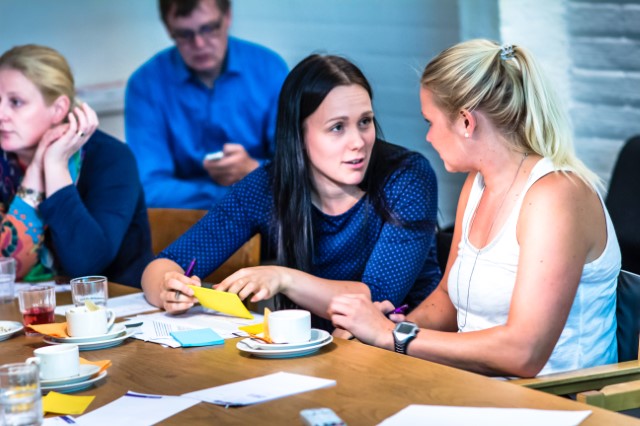The “Household of the future” project is seeking ways to embed resource wisdom into the everyday lives of city dwellers. As part of this project, families and households based in the Central Finland region are testing what it is like to lead the resource-wise life of the future, making efficient use of natural resources and reducing emissions without compromising on well-being. The project covers all dimensions of sustainability, examined from the human perspective and taking account of the size of each household.
The first concrete steps have now been taken, with the pilot households now on their journey towards a more resource-wise future. The families and experts involved in the project met in a kick-off workshop in Jyväskylä, in order to plan the project. The first practical measures were taken at the workshop.
At this stage, the families are monitoring their consumption. Based on the resulting data, experts will calculate their material footprint using the MIPS method (Material Input Per Service Unit). This takes account of material input, including infrastructure, throughout the life cycles of products and services. MIPS is designed to make the most comprehensive calculation possible of, say, the quantity of natural resources a car consumes during its life cycle. In parallel with the MIPS calculations, the families’ carbon footprint will also be analysed.
Once the measurement results have been presented, it will be time to begin planning for the future. The project staff and households will jointly define a target value for the footprint, and draw up strategies for making the necessary changes; in other words, visually rendered plans for achieving the targets. For each measured aspect, these plans will demonstrate which material footprints should be reduced and by how much.
These changes will be implemented in the form of practical trials tailored to meet the needs of each household: some may be based on existing services and practices, but new operating models may also be simulated. The goal is to reduce the environmental impact of each household. The changes will affect the families’ everyday lives, including their use of transport, goods, housing, food and leisure time.
But how will these efforts to reduce material footprints fare in Jyväskylä? How long will the families persist on their path towards a more ecological lifestyle? And what about the children? And what services will be needed in Central Finland to make leading a more resource-wise life possible in the first place?
Follow the project and join the discussion on Sitra’s website, or by liking the project’s Facebook pages, or via other social media: #resourcewisdom and #householdofthefuture
